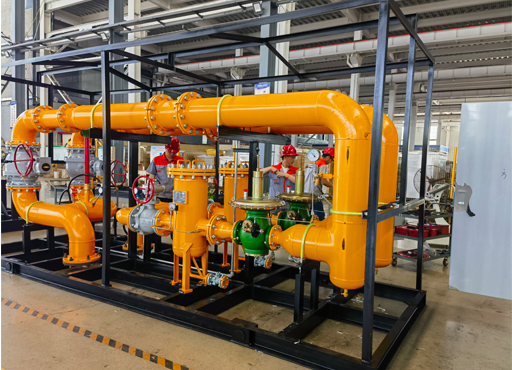
Nov . 06, 2024 07:22
Back to list
Natural Gas Equipment and Technologies for Efficient Energy Solutions
Natural Gas Equipment A Key Component of Energy Infrastructure
Natural gas has emerged as a crucial player in the global energy landscape, providing a cleaner and more efficient alternative to traditional fossil fuels. As countries around the world shift towards more sustainable energy sources, natural gas equipment has become indispensable in extraction, processing, and distribution processes. This article delves into the various types of equipment used in the natural gas industry, highlighting their significance and technological advancements.
Extraction Equipment
The first stage in the natural gas supply chain is extraction, which involves the removal of gas from underground reservoirs. Key equipment in this phase includes drilling rigs, blowout preventers, and wellheads.
1. Drilling Rigs These are large machines used to bore holes into the earth to access natural gas reserves. Modern rigs are equipped with advanced technology that allows for both vertical and horizontal drilling, maximizing the extraction potential of gas fields. 2. Blowout Preventers (BOPs) Safety is paramount in gas extraction. BOPs are critical safety devices designed to prevent uncontrolled releases of gas during drilling. They can seal the well in case of overpressure, thereby protecting both workers and the environment.
3. Wellheads Once the gas is extracted, it is brought to the surface through wellheads, which serve as the interface between the reservoir and the processing system. Wellheads control the flow of gas and allow for monitoring of pressure and temperature.
Processing Equipment
After extraction, natural gas must be processed to remove impurities before it can be transported to consumers. This involves a variety of equipment, including separators, scrubbers, and compressors.
.
2. Scrubbers Scrubbers are employed to remove unwanted contaminants such as hydrogen sulfide and carbon dioxide from natural gas. This process not only enhances the quality of the gas but also complies with safety and environmental regulations.
معدات الغاز الطبيعي

3. Compressors Natural gas is transported through pipelines over long distances, and compressors play a vital role in pressurizing the gas. They help maintain a steady flow and ensure that the gas can reach end-users efficiently.
Transportation Equipment
The next step involves transporting processed natural gas to consumers, which requires a well-organized infrastructure of pipelines and storage facilities.
1. Pipeline Systems The backbone of natural gas transportation is the extensive network of pipelines that connect production sites with customers. These pipelines are designed to withstand high pressure and are constructed from robust materials to ensure safety and longevity.
2. Storage Facilities Natural gas storage is essential for managing supply fluctuations. Equipment like underground storage tanks and liquefied natural gas (LNG) terminals allow for the safe storage of gas, ensuring its availability during peak demand periods.
Technological Advancements
The natural gas industry is continually evolving, with technological innovations enhancing efficiency, safety, and environmental sustainability. For instance, the integration of digital technologies, such as artificial intelligence and the Internet of Things (IoT), has improved monitoring and predictive maintenance of equipment. This leads to reduced downtime and lower operational costs.
Moreover, advancements in materials science have resulted in stronger and more durable pipeline materials, reducing the risk of leaks and environmental contamination. The adoption of renewable energy sources and carbon capture technologies within the gas infrastructure further supports the global transition to a cleaner energy system.
Conclusion
Natural gas equipment plays a pivotal role in the energy sector, enabling the efficient extraction, processing, and transportation of this vital resource. As the world increasingly relies on natural gas as a bridge towards a sustainable energy future, continuous advancements in technology and equipment are essential. By ensuring safety, efficiency, and environmental responsibility, the natural gas industry stands better equipped to meet the energy demands of our time.
Next:
Latest news
-
Safety Valve Spring-Loaded Design Overpressure ProtectionNewsJul.25,2025
-
Precision Voltage Regulator AC5 Accuracy Grade PerformanceNewsJul.25,2025
-
Natural Gas Pressure Regulating Skid Industrial Pipeline ApplicationsNewsJul.25,2025
-
Natural Gas Filter Stainless Steel Mesh Element DesignNewsJul.25,2025
-
Gas Pressure Regulator Valve Direct-Acting Spring-Loaded DesignNewsJul.25,2025
-
Decompression Equipment Multi-Stage Heat Exchange System DesignNewsJul.25,2025

